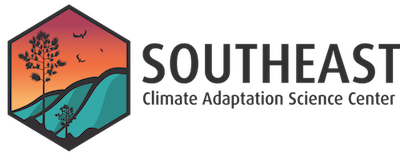Caitlin Kempski
Graduate Student | Department of Education Program in Science Education | NC State University
2018-19 Global Change Fellow
Statement of purpose:
My background is as a community ecologist and educator. My Master’s thesis examined the insect and arachnid abundance and biodiversity in three different cellulosic biofuel crops. As we continue to explore new energy sources we also need to explore the ecological impacts the different option would have. As an educator I have focused on teaching non-science majors and the general public about biodiversity, conservation, climate change, and innovations that can help mitigate climate change and further conservation efforts.
As an ecologist it is impossible to accurately study how different communities interact without including the direct impact from humans, and the indirect impacts from human-caused climate change. Without this we cannot achieve conservation goals, but it is difficult for the general public to understand all of the interrelationships involved. It is my goal to use informal science centers to educate the public about conservation and climate change, and empower them to work for change. It is my belief that my goals fully align with the Southeast Climate Adaptation Science Center’s mission to “help to ensure that the wildlife, places, and cultural resources we value endure the climate changes ahead.” Educating the public so that they understand these initiatives is a vital part of achieving these goals. I also welcome the opportunity to work with an interdisciplinary group of fellows and value the ability to work with people from different backgrounds, specialties, and viewpoints to address conservation issues.
Description of research:
I am currently conducting a systematic review of the research on climate change and global warming education, focusing on what methods have and have not been found to be effective. By identifying what has been shown to work well with different groups of learners it becomes easier for educators to start using those methods. Many informal educators and climate scientists are very knowledgeable about the science, but not in how to teach it to different groups. It is my aim to give them a road map to follow.
I will also be studying green roofs and ways to increase their use. They provide habitat for pollinators, remove carbon dioxide from the air, and lower cooling costs for the buildings by shielding their roofs from the sun. The green roofs also reduce the heat island effect by reducing the amount of sunlight that is absorbed by the roof. Plants placed on rooftops provide benefits for the environment, building operators, and the people in the area and so I am eager to study how to make their use more common place. I hope that education efforts for architects, policy makers, and the public could advance this goal. As their use increases, green roofs could help conserve multiple species, especially amongst birds and butterflies, by providing food and habitat even in areas where buildings dominate the landscape.
It is my belief that science can be taught in a way that allows people to see how different scientific concepts interrelate. I firmly believe that scientific literacy is vital to helping people make informed choices and I want to increase scientific understanding in America and around the world. While formal education is a vital part of this endeavor, informal education has the ability to reach large audiences spanning age levels and diverse backgrounds. It is my belief that helping to improve informal science education content delivery and shaping best practices through research will improve science literacy for millions of people. It is known that free-choice visitors to zoos and aquaria have higher-than-expected knowledge of ecological concepts and pro-conservation behavior, and so a statistically significant change after a visit is not seen. However, it is not known what effect a visit can have on non-free-choice visitors, such as students on field trips. This leads to my interest in studying the intersection between formal and informal education and the desire to help experts in different scientific fields communicate their findings to the public and to educators. As information is gathered from research and modeling that shapes resource management decisions, we must also communicate it to the public so that they can understand how these decisions are being made. This research aligns with DOI Priorities 1. Creating a conservation stewardship legacy second only to Teddy Roosevelt, and 3. Restoring trust with local communities.
